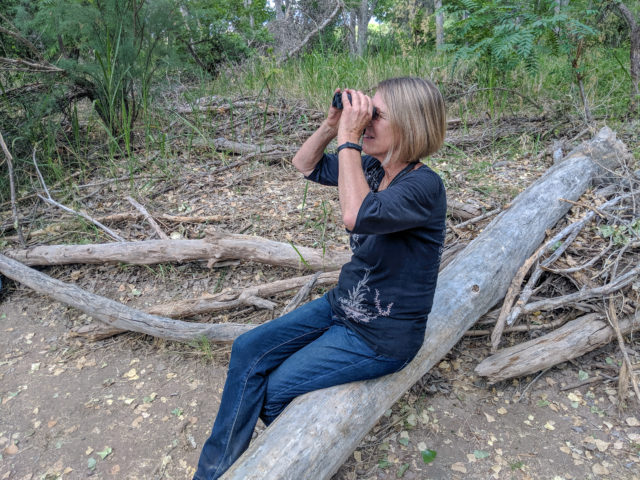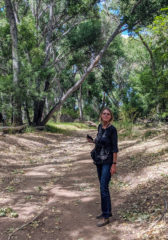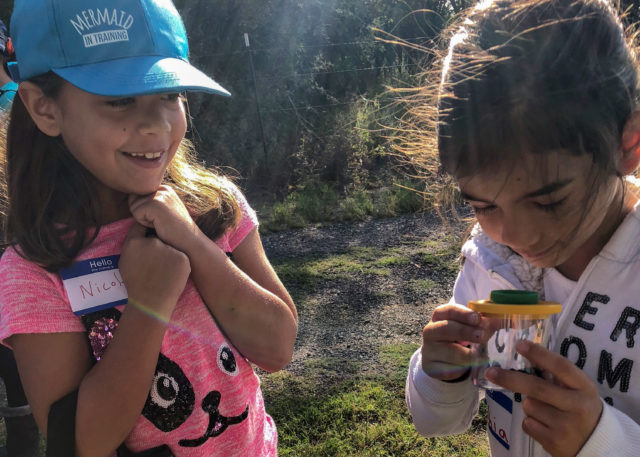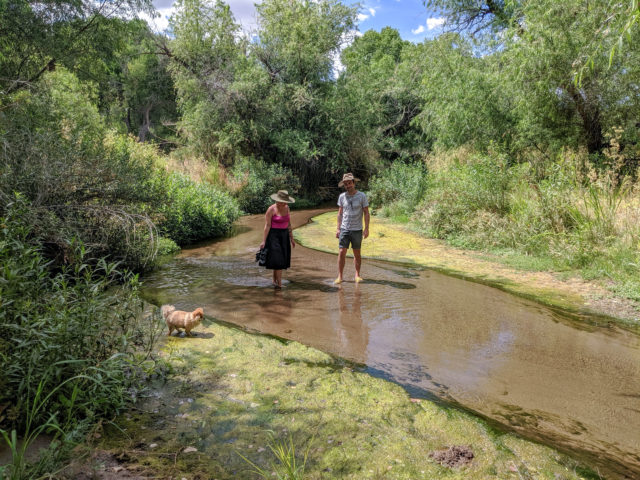Connie Williams has traveled the world, but it’s the Sonoran Desert that calls to her: “I’ve been to places that are more beautiful, places that have a richer life. But I think when you’re connected to a place, it doesn’t have to be superlative in any way. It just has to be the place that you love.” For Connie, this place is Rio Rico, Arizona, and “the gorgeous river that runs through it.”

Her passion for the Santa Cruz River drives Connie to do everything she can to protect it and to spread her love of the river throughout her community. Her business card lists her involvement in seven different organizations that support the quality of life in her river town.
“Around me, all these people were working together to accomplish this thing. I felt it go from the bottom of my feet up through my head…It was community, it was stewardship, it was just being out in nature.”
—Connie Williams, Founder of Corridor Keepers, & community organizer
Today, Connie is on the Santa Cruz River to search for the famous Rose-throated Becard, a rare bird that calls the Tubac stretch of the river home. In fact, it’s the only place in the U.S. where this species is known to nest. As she walks along the river, she greets a family watching their two dogs play in the water. The family is curious about the river water, and Connie is happy to explain that the treatment process upstream makes her confident that their dogs are safe playing in what was formerly wastewater. To Connie, a retired science teacher, providing this education is just another way to express how much she cares about this fragile resource.

The Santa Cruz is a binational river, and much of the water in this section comes from wastewater that Sonora, Mexico, sends over the border to a treatment plant in Rio Rico. The highly treated water is then released into the river and flows north. Connie knows that Sonora could one day decide to keep its portion of the Santa Cruz water, and that this would probably cause the river in Rio Rico to disappear.
“I would be heartbroken,” she says, considering this possibility. For now, the river flows on quietly through small communities, and Connie is busy working on its behalf. “It’s about protection,” she says, “It’s whatever I can do to protect, enhance, and extend the health of the river and the community.”
To Connie, the key to preserving the river is getting people in the community emotionally engaged. To help local families build their own connections to the river, she organized “Corridor Keepers.” This group brings elementary school students and their families to the river to learn, play, and make memories of this special place.
Pulling up a picture from one of these student outings, Connie laughs pleasantly. It shows a girl standing by the river, enamored with something being shown to her in a small bowl. Connie says, “This little girl, when she found out the theme of the hike was ‘Bugs and Butterflies,’ said ‘Ewwwwww, I hate bugs!’ But you can see that she is absolutely having a transition moment. She is completely charmed by whatever it is that they are looking at in there.”

Through her work with Corridor Keepers and the other organizations, Connie has become a true leader. People on the river trail recognize her, and her impact is indisputable. But Connie claims that it is the river, and the lessons she has learned about experiencing nature and community through her service to the Santa Cruz, that have changed her.
She remembers a day when 130 volunteers joined her and Sherry Sass from Friends of the Santa Cruz to clean up a dam of trash that had been choking the river. “It was a horrible mess and you could see all the work that we still had to do,” Connie says. “Then, about 10 o’clock I stood up and looked behind me, and it was all clean. Around me, all these people were working together to accomplish this thing. I felt it go from the bottoms of my feet, up through my head…It was community, it was stewardship, it was just being out in nature.”
She crosses paths with others who are searching for the Becard nest, but no one seems able to find it. They almost give up when Connie shows them how to take in the moment.
“It’s so easy when you’re walking in nature like this to be walking along, thinking about what you’re going to do when you get there,” she says. “You have to really make a concerted effort to slow it down, tune into your senses. The first sense I work with is hearing.”

For a while, the group walks in silence, listening to the birds and the steady flow of the river beside them.
“The next sense is touch. Where is the air on your skin? Is it cool?”
“And then sight,” she says, gesturing to the cottonwood canopy. “The trees are so huge here.”
Suddenly they see them, right above: the bizarrely cylindrical, bundled nests of the Rose-throated Becard. The tiny birds flutter up among the cottonwood branches. “Oh, the bird is there!” Connie says. “Oh, too cool.”
This post is part of a series of community voices about the Santa Cruz River.
Read the other posts by clicking the links in the introduction: When You and the River Meet
Blog series by Amanda Smith, Program Coordinator; copy-editing and audio-editing services donated generously by Nicole Cloutier and Jonathan Palomino.
